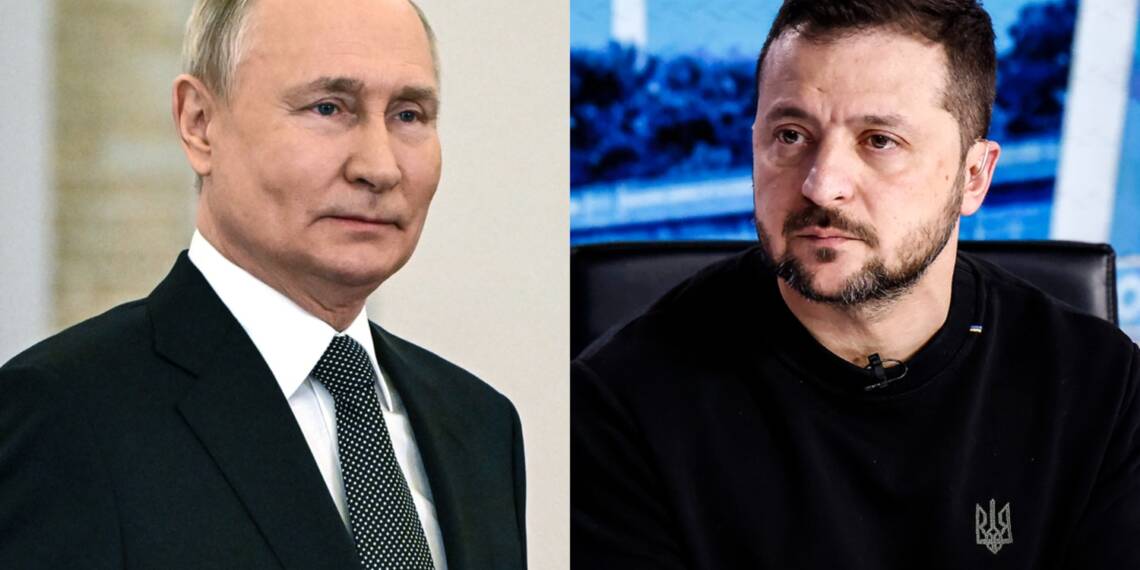Ukrainian President Volodymyr Zelensky has warned that if Russia continues its attacks on Ukraine’s energy infrastructure, Kyiv will retaliate by targeting power facilities in Russian border regions such as Belgorod and Kursk. The move, he said, would be a “fair” and proportionate response to Russia’s ongoing winter campaign aimed at destabilizing Ukraine’s energy grid.
The statement follows confirmed Ukrainian strikes on Belgorod, which temporarily left tens of thousands without electricity. While the Ukrainian leadership has emphasized it does not intend to harm civilians, the warning signals a potentially new phase in the conflict — one in which energy systems become reciprocal targets.
What Zelensky Said
In a press briefing reported by the Kyiv Independent, Zelensky said Ukraine’s armed forces would consider causing blackouts in Russia as a justified military tactic, especially if Russia persists in its strategy of targeting Ukraine’s power grid during the winter.
“If Russia tries to blackout us by striking our energy infrastructure… the answer should be fair,” Zelensky stated. “If you strike us, we can strike back — not at civilians, but at your ability to wage this kind of war.”
Ukrainian forces recently hit Russian energy targets in Belgorod, damaging facilities and highlighting their capacity to reach across the border with precision strikes. While Kyiv has framed these actions as deterrent measures, the message is clear: no part of Russia directly involved in the war effort is off limits.
Context: Russia’s Renewed Assault on Ukraine’s Energy Grid
Russia has renewed its campaign against Ukraine’s energy infrastructure in recent months, echoing the winter assaults of 2022 and 2023. According to reports, recent Russian strikes on Kyiv and other major cities targeted substations and transformers, aiming to weaken Ukraine’s resilience ahead of the cold season.
These blackouts are not merely tactical; they are designed to degrade morale, displace civilians, and create pressure on Ukrainian defenses.
How Ukraine Could Impose Blackouts on Russia
1. Precision Kinetic Strikes
Ukraine has already demonstrated it can strike deep into Russian territory using drones and long-range munitions. Recent attacks in Belgorod and Kursk damaged electrical substations and grid infrastructure — causing localized outages without major civilian casualties. Kyiv’s strategy appears focused on targeted disruption, rather than indiscriminate bombardment.
2. Cyber or Hybrid Operations
While not confirmed in open sources, cyberattacks remain a theoretical component of Ukraine’s retaliatory options. If successful, such operations could temporarily disable grid management systems without visible physical damage — a tactic harder to attribute and potentially less provocative.
3. Targeting Logistics and Fuel Lines
Beyond direct attacks on the grid, Ukraine may also target fuel depots, railway lines, or maintenance facilities critical to Russian power distribution. These indirect methods could have cascading effects on energy availability without crossing certain escalation thresholds.
Risks and Constraints for Zelensky and Ukraine
While striking Russian infrastructure may satisfy calls for proportionality, the risks are considerable:
Escalation: Russia could respond with intensified strikes on Ukraine’s civilian grid, military command centers, or civilian infrastructure.
Civilian Impact: Any blackout — even targeted — affects hospitals, homes, and services. Miscalculations can result in civilian deaths and international backlash.
International Reactions: While Ukraine’s Western allies may understand the logic of retaliation, any action seen as excessive or reckless could complicate ongoing military and financial support.
Technical Barriers: Effective strikes require accurate intelligence on grid vulnerabilities. Missing key data could render such operations ineffective — or worse, cause unintended consequences.
Moscow’s Likely Response
The Kremlin’s rhetoric has already cast Ukraine’s cross-border strikes as acts of terrorism. According to RT, Russian officials have accused Ukraine of intentionally targeting civilians — a claim Kyiv denies. Moscow is likely to pursue a multi-pronged response:
Military Retaliation: More attacks on Ukrainian cities and critical infrastructure.
Infrastructure Hardening: Fortifying energy assets in border regions with enhanced air defenses and redundancy systems.
Domestic Crackdowns: Arresting suspected collaborators and reinforcing internal security.
Propaganda and Diplomacy: Amplifying Ukraine’s actions in global media and seeking to sway neutral or pro-Russian international audiences.
President Zelensky’s threat to blackout Russian regions marks a shift in Ukraine’s deterrence posture. While framed as a proportional response to Russian aggression, it also risks deepening the conflict and expanding the battlefield beyond Ukraine’s borders.
How Russia responds — and whether both sides choose restraint or escalation — could determine whether this winter becomes one of continued attrition, or dramatic expansion.








